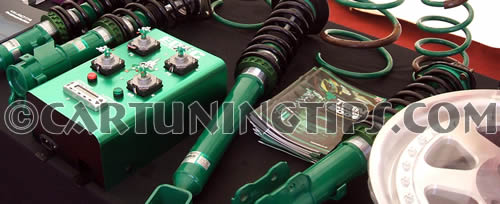You will often see parts makers quoting mods in stages. Typically manufacturers of performance parts and car tuning companies use 1 – 3 to denote the state of tune provided. This is generally a pretty meaningless statment to make but there are some general similarities that help one understand what is on offer.
So what does a tuning stage mean and what are the differences between a stage 1 and stage 3 tune up.
There is a wide divergence of opinion on the web about these and some manufacturers merely mean option 1, option 2 or option 3 and give differing power figures for each option.

The commonly held perception of these stages are as follows.
Stage 1 tuning is a “bolt on” or single modification that requires no other work to the car or engine. You can consider a stage 1 modification to be referred to as a fast road mod. It is suitable for a daily use car. A fast road cam, sports exhaust, induction kit and even a low power remap can be classed as stage one if they work on a standard car with no other mods. Adding one or more of these mids together usually gives a cululative addition and is greater than the sum total of all the other parts power gains added together.
Stage 2 tuning is more ambitious than stage 1. It will give a power gain, larger than that for a stage 1 mod but will usually require the uprating or replacing of other parts to work. Examples of stage 2 modifications include a hybrid turbo which requires a different manifold or diverter valve or remap to work at it’s best, a stage 2 remap may require a bigger turbo or uprated clutch or diverter valve to work. Reliability of the car should be unimpared but you will pretty much have lost any scope or margin for error in the standard manufacturers setup and need to fastidiously service the car and maintain it.
Stage 3 tuning is also referred to as the motorsport or competition tune. This stage of tuning totally unsuitable for road use as the car will typically idle irratically require high rpm to be used, be uneconomical, fail emissions tests and be too lumpy to drive around in traffic. On the track though where high RPM is in use all the time, brakes are generally kept warm through use and emissions are not a consideration then stage 3 is practically a requirement.
Power gains are not quoted for any of these stages as this varies dramatically from car to car, also the parts used have varying degrees of affect on the power band. Generally though a stage 1 mod will give a negligable power gain on its own, stage 2 will certainly be noticable and stage 3 represents the maxumum power you can extract from your engine.
We hope this clears up some of the mystery when these terms are used.
